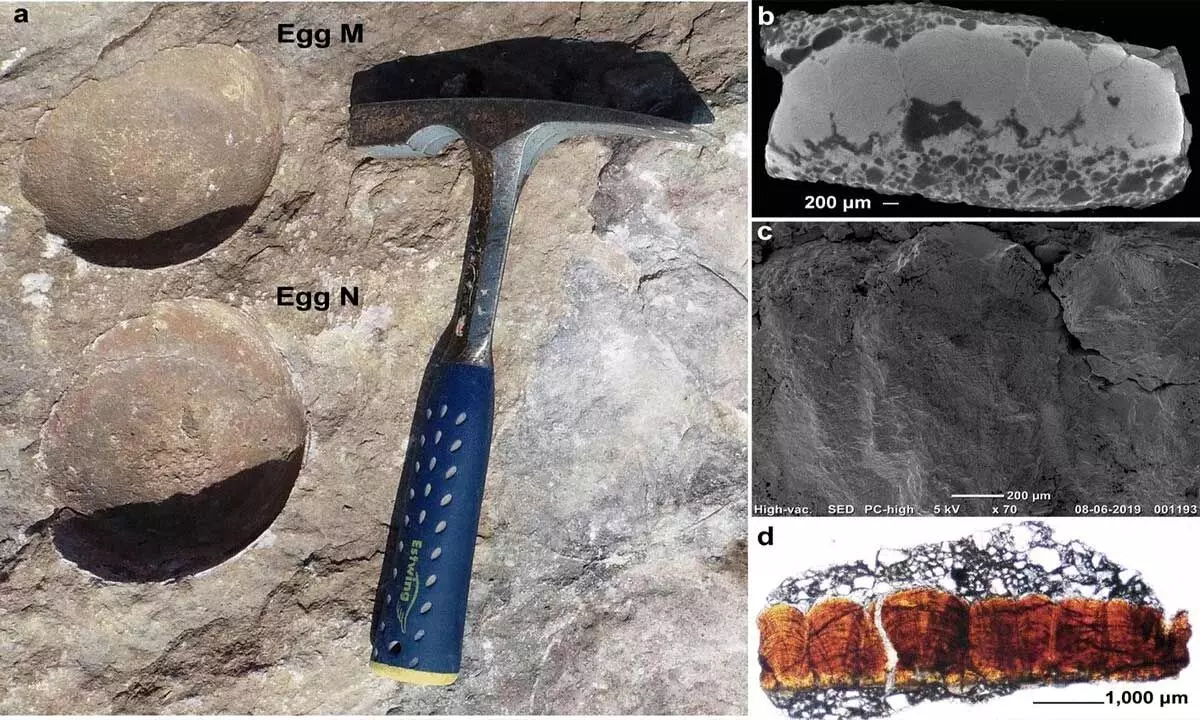Discovery Of Abnormal Dinosaur Eggs In India Raises New Evolutionary Questions

Field photographs and microscopic images of the eggshells from egg number M show oospecies Fusioolithus baghensis characterized by fan-shaped shell units with arching growth lines and basal end cap units. | Photo Credit: Scientific Reports
- A team of researchers from the University of Delhi discovered a remarkable set of fossilised dinosaur eggs, one nesting within the other.
- The rare fact is that eggs-within-eggs have only been observed in birds and have never been observed in reptiles.
A team of researchers from the University of Delhi discovered a remarkable set of fossilised dinosaur eggs, one nesting within the other. The findings took place at Dinosaur Fossil National Park in the Dhar District of Madhya Pradesh.
The rare fact is that eggs-within-eggs have only been observed in birds and have never been observed in reptiles. This finding reveals new links between reptilian and avian evolution.
The findings show "egg-in-egg" occurrence in a titanosaurus dinosaur egg discovered in the Bagh area of Madhya Pradesh's Dhar District.
Sauropod dinosaurs were among the largest terrestrial animals ever to exist, and they were widely distributed millions of years ago in what is now India. These creatures' fossils have been discovered in Gujarat, Madhya Pradesh, and Meghalaya. The Upper Cretaceous Lameta Formation of Central India has long been known for its dinosaur fossils and scientists in Madhya Pradesh documented 52 titanosaur sauropod nests near Padlya village, close to Bagh town. One of these nests contained ten eggs, one of which was "rare and abnormal."
The egg features two circular eggshell layers that are separated by a broad gap, similar to that seen in birds. Until now, no egg-in-egg fossil egg had been discovered in dinosaurs or other reptiles like turtles, lizards, or crocodiles.
Dinosaurs were thought to have a reproductive function comparable to that of turtles and other reptiles, as opposed to crocodiles and birds, which have a segmented reproductive tract with separate membrane and shell deposition areas.
Harsha Dhiman, Department of Geology, University of Delhi said that the discovery of an ovum-in-ovo egg in a titanosaur nest raises the idea that sauropod dinosaurs had oviduct anatomy similar to crocodiles or birds, and that they evolved to a manner of egg-laying comparable to birds.

















